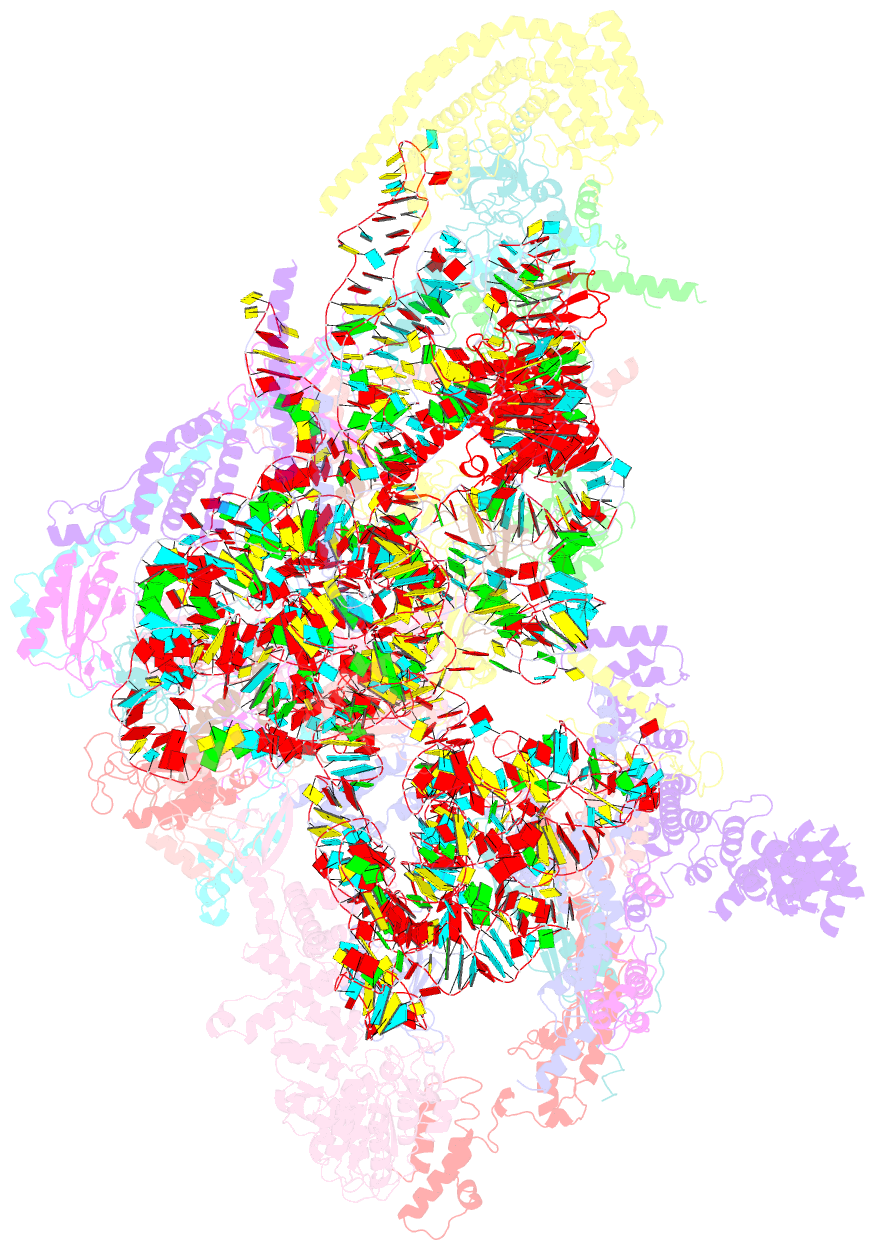Summary information and primary citation
- PDB-id
- 6neq; SNAP-derived features in text and JSON formats;
DNAproDB
- Class
- ribosomal protein
- Method
- cryo-EM (3.32 Å)
- Summary
- Structure of human mitochondrial translation initiation factor 3 bound to the small ribosomal subunit-class-ii
- Reference
- Koripella RK, Sharma MR, Haque ME, Risteff P, Spremulli LL, Agrawal RK (2019): "Structure of Human Mitochondrial Translation Initiation Factor 3 Bound to the Small Ribosomal Subunit." iScience, 12, 76-86. doi: 10.1016/j.isci.2018.12.030.
- Abstract
- The human mitochondrial translational initiation factor 3 (IF3mt) carries mitochondrial-specific amino acid extensions at both its N and C termini (N- and C-terminal extensions [NTE and CTE, respectively]), when compared with its eubacterial counterpart. Here we present 3.3- to 3.5-Å-resolution cryoelectron microscopic structures of the mammalian 28S mitoribosomal subunit in complex with human IF3mt. Unique contacts observed between the 28S subunit and N-terminal domain of IF3mt explain its unusually high affinity for the 28S subunit, whereas the position of the mito-specific NTE suggests NTE's role in binding of initiator tRNA to the 28S subunit. The location of the C-terminal domain (CTD) clarifies its anti-association activity, whereas the orientation of the mito-specific CTE provides a mechanistic explanation for its role in destabilizing initiator tRNA in the absence of mRNA. Furthermore, our structure hints at a possible role of the CTD in recruiting leaderless mRNAs for translation initiation. Our findings highlight unique features of IF3mt in mitochondrial translation initiation.





